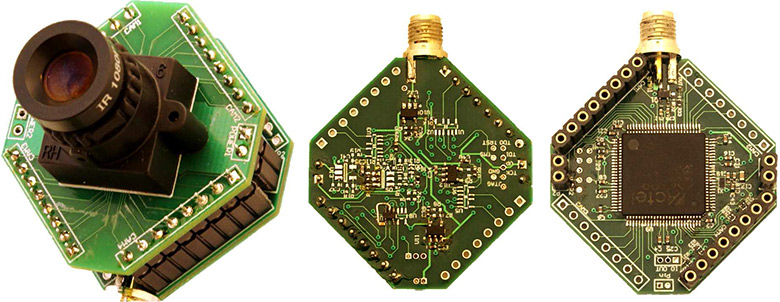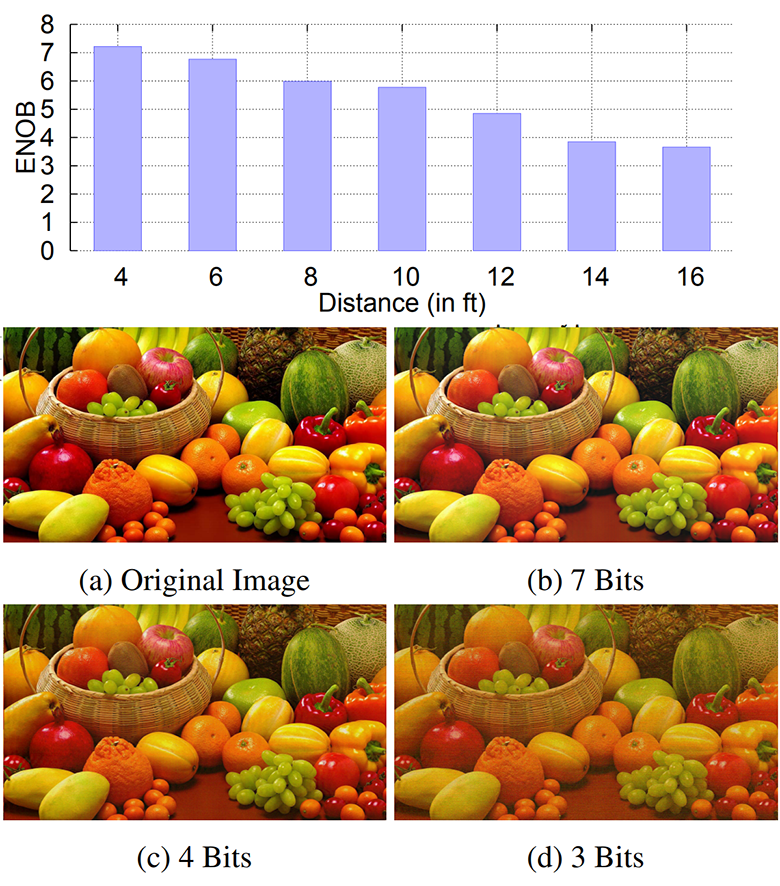 ASIC wireless HD camcorder. Photo: University of Washington
ASIC wireless HD camcorder. Photo: University of WashingtonBackscattering is a physical phenomenon in which waves, particles or signals are reflected in the opposite direction, that is, towards the source. It is traditionally used in astronomy, photography and ultrasound. But it turns out that this phenomenon can be used for electronics, sensors and radio transmitters.
In the
laboratory of sensor systems at Washington University, we developed an
HD video module that transmits 720p and 1080p video stream at 60 FPS with 321 and 806 µW of power, respectively. This
is 1000-10000 times less than that of existing wireless cameras. In other words, the module will have enough energy extracted from the environment (WiFi, light, vibration, temperature difference, microwave radiation, etc.).
This was achieved by eliminating “extra” electronics from the device, including the ADC and video encoder. The signal from the sensor is transmitted in analog form through a pulse-width modulator with backscattering.
Imagine that we have a wireless video camera, for example, a surveillance video camera, smart glasses or another gadget from the Internet of things. In short, the wireless video camera works as follows:
- photons arrive at the photodiodes of the photosensitive array, which convert light into an electric charge;
- low noise amplifier (LNA) amplifies the signal;
- the automatic gain control module (AGC) verifies that the resulting signal does not exceed the range processed by the analog-to-digital converter (ADC or ADC);
- The ADC performs sampling and converts analog voltage spikes to digital form;
- video encoder compresses digital video;
- the radio transmits the digital video signal to the base.
The lion's share of power consumption in such a gadget does not fall on a photosensitive sensor, but on the rest of the electronics. It has been proven that the 128 × 128 sensor itself
can only work at 1.2 microwatts .
So, engineers from the laboratory of sensor systems, in order to reduce energy consumption,
carried the ADC together with other electronic components outside the module .
 Diagram of a conventional video camera with a digital signal transmitter
Diagram of a conventional video camera with a digital signal transmitter Video camera circuit with an analog signal transmitter through backscattering, where the rest of the electronics is moved outside the module
Video camera circuit with an analog signal transmitter through backscattering, where the rest of the electronics is moved outside the moduleAs you can see, a low-noise amplifier (LNA), an automatic control module (AGC), an analog-to-digital converter (ADC) and a video encoder are transferred from the mobile part to the receiver side. Instead of a conventional radio transmitter, a pulse-width modulator (PWM) with backscattering is used.
 Backscatter pulse width modulator circuit
Backscatter pulse width modulator circuitInterestingly, PWM also
compresses the analog signal in the reference frames. The idea is that the values of neighboring pixels do not differ much from each other. Therefore, instead of the usual progressive scanning of the matrix, zigzag scanning was implemented here, when even lines are scanned from left to right, and odd lines are scanned from right to left. Experiments have shown that this makes it possible to reduce the broadcast band.
The table shows the bandwidth for transmitting video with a peak-to-noise ratio at the receiver side of more than 30 dB (the average and worst results are based on the results of hundreds of experiments for each scenario).

The transmission quality, that is, the
Effective Number of Bits (ENOB) indicator, depends on the distance between the video camera and the receiver. The diagram shows the results of a laboratory experiment at a distance of 4 to 16 feet (from 1.22 to 4.88 m). For example, the frame quality is also compared with different losses (ENOB from 3 to 7 bits).

In the laboratory, sensory systems have been experimenting for a long time using backscattering in various microcircuits. Previously, they developed the open source
WISP (Wireless Identification and Sensing Platform) platform . These are EPC Class 1 Generation 2 RFID sensors on an open source platform with a programmable 16-bit controller that is compatible with various sensors. It transmits data through a UHF RFID high-frequency radio tag scanner and receives energy from it, that is, it does not need batteries at all. Unlike conventional RFID, on the WISP platform, radio tags are programmed to execute arbitrary computer programs.
 WISP platform
WISP platformMiniature devices consume almost no energy, so they are ideal for working in monitoring systems, surveillance cameras, wearable gadgets, etc. In general, the use of backscatter in electronics can lead to the fact that in the future many mobile devices will get rid of batteries. You can read more about “passive WiFi” in scientific articles previously published by experts at the University of Washington:
IoT Security begins with PKIGlobalSign works with developers, partners, device manufacturers and industry communities to quickly deploy identification and protection systems in the ecosystems of the Internet of Things with minimal capital investment and time to market.
Contact us at info-ru@globalsign.com to find out how we can be of help to you.